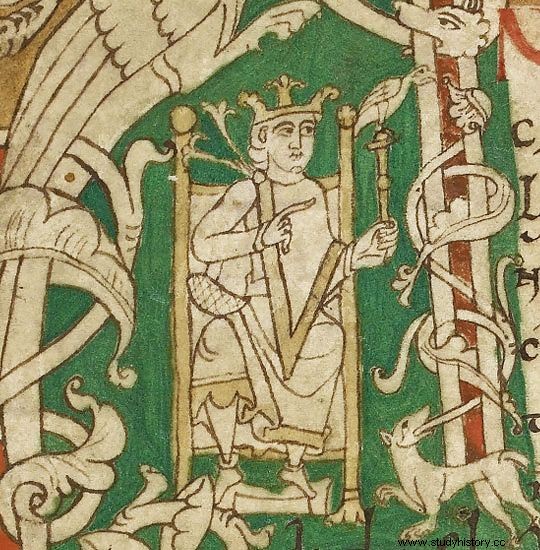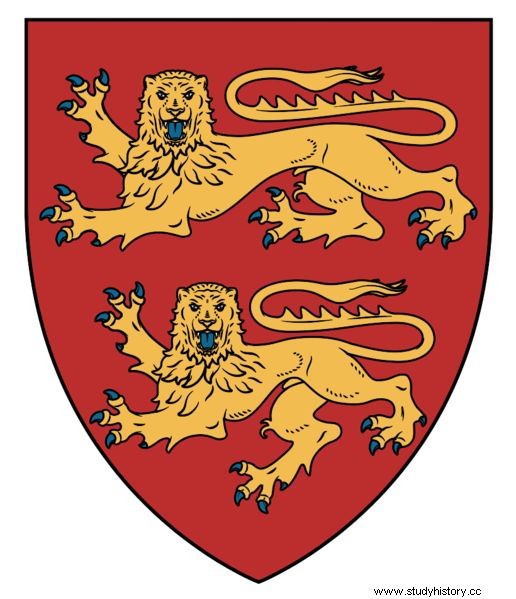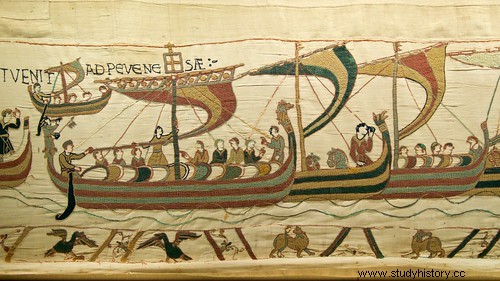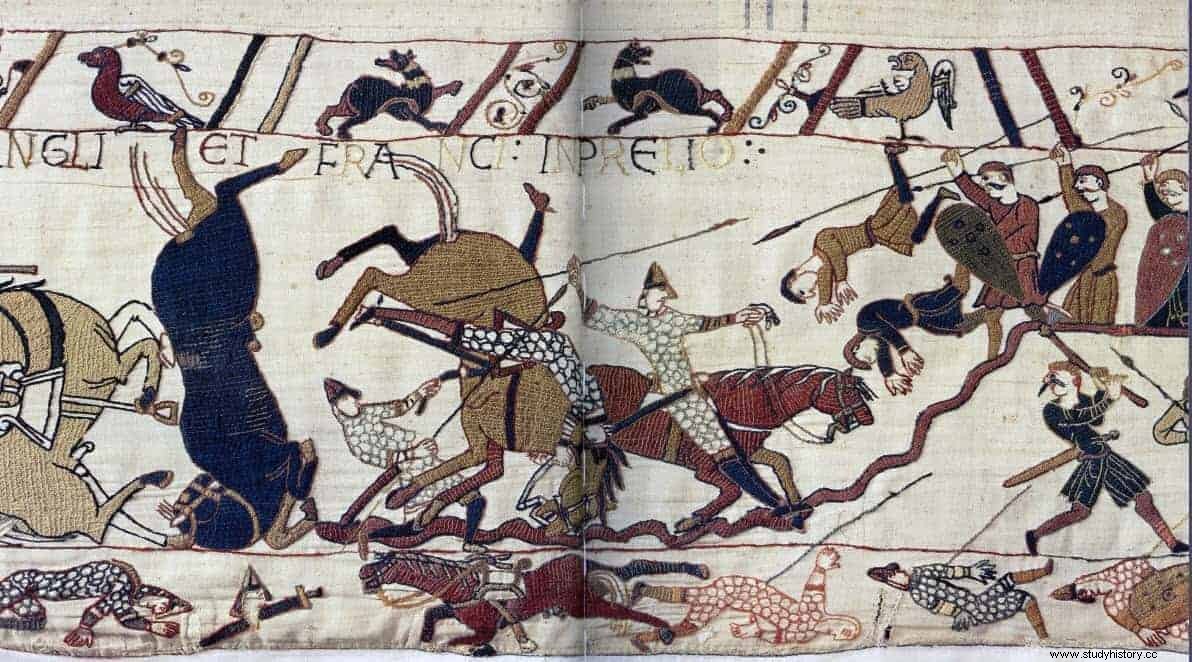For centuries, there have been many figures in the history of England who contributed to the foundations of modern territory. Whether small or large, each character gets the right recognition and celebration for their success in overcoming past obstacles.
This week we unveil the legend of William the Conquer:A Norman Icon who defied all odds and changed a culture. In addition, there is a clearer understanding of his role in the formation of the beloved country many admire today.
William the Conques Origins

Initially, William the Conqueror's arrival in the world began between the years 1027 and 1028. Although the exact date remains to be known, his date of birth is believed to take place near the end of 1028.
As for his parents, the future Norman king's predecessors are recognized as Herleva and Robert I (Duke of Normandy). Although William was conceived out of wedlock, he was still in line to take on the role of father one day.
To illustrate, Williams' father Robert I and his brother Richard III lived constantly through competitive tension. In addition, the crown and the question of who would rule resulted in the death of Richard III.
As this event was controversial, no clear decision was ever made as to what happened regarding this incident. Apart from this, by 1031, Robert I received enough support from other nobles who played major roles in Williams' life.
This event proved to be stable when Robert I lost his life during the voyage that returned from Jerusalem in 1035. In summary, these early events in the young king's life paved the way for his prominent role when the Normans swore allegiance.
Distance and shift to the Order of Normandy

Moreover, with the death of his uncle and father, the young duke, who is soon to be king, begins to face obstacles. While receiving extended paternal support from great-uncle Archbishop Robert and King Henry I of France, William remained under protection.
This was actually comforting for a young boy, but this soon changed in the spring of 1037. Furthermore, Archbishop Robert's death proved fatal to the young king's stability when Normandy collapsed.
For the next ten years, this northern French region fell into anarchy. With this in hand, the young duke / king was accompanied by a number of guards.
Undoubtedly, this period showed constant violence and near-death experiences for the future heir. For example, a guardian named Osbern was murdered near a room where the young duke slept.
As a result of all these risky and deadly encounters, William found himself moving from different homes in and out of Normandy. Moreover, he finally finds his place by being raised by three cousins who play major roles in his future.
For his part, William the serious situation of the conqueror's homeland provided many means for his inheritance.
Further shifts of the Duke / King
To add, many other Norman nobles continued to wage war on each other. While this continued to take over the country, those loyal to Williams' lineage never stopped showing support.
For example, King Henry saved the young duke during a siege in Valognes when he barely escaped through the darkness. In addition, he also let the future successor seek refuge under his wings.
In 1047, William and King Henry return to their homeland and gain the upper hand under his influence. To illustrate, the Battle of Val-es-Dunes proves to be a success for his efforts with the help of Henry's army.
With this in hand, William finally takes power in his native Normandy. While the region is beginning to gain some stability after a decade of chaos, few more violence continues to gain control.
In essence, things began to take a positive turn for William the Conqueror and his people.
Unfair feuds for power

Furthermore, as the Duke of Normandy took control of his ancestral land, he continues to expand his power. One can see this example when Geoffrey Martel was driven out by the late Hugh of Maines County.
As a result, William obtained Belleme's family refuge Domfront and Alencon. In fact, these events only highlight the surface of the Norman duke's skill.
In 1052, Geoffrey Martel returns by making King Henry and Norman nobles famous for opposing Williams' growing power. Ironically, the current king who helped the ambitious William was at the opposite end to limit his growing influence.
Shortly afterwards, the Duke of Normandy found himself involved in a military conflict against his people. In the winter of 1054, King Henry and other rebels in Normandy followed up with an invasion of the territory.
In short, the Duke of Normandy's character test was put in the spotlight.
Making a King

In addition to the fact that the aspiring duke's influence is being challenged by a former ally and loyal nobles, there are many developments. Also, by listening to the threats that come, William divides the supporters into two separate groups.
Interestingly, the other group that fought under his name was recognized for hosting his three cousins who raised him. As a result of his cautious approach to this matter, the Duke's army succeeds in repelling the opposing forces.
This marked another turning point for the future king as his genius and admirable leadership began to be further recognized. While Normandy remained under Williams' control, King Henry and Geoffrey reappeared with counterattacks that never succeeded.
To add, the year 1057 is known to be the last Norman invasion experienced during Williams' lifetime. Together, the aspiring duke's influence was centralized when King Henry and Geoffrey's death occurred in 1060.
Norman Territory

Moreover, with the powers of the duchy falling to the duke, the region of Normandy begins to develop and flourish. The government under Williams' influence was met with main positivity as there was no great difference from previous examples.
For example, an administrative system was created and recognized for its group of officers such as stewards, marshals and butlers. Furthermore, the income to the region comes from duchies, local taxes and tolls.
Along with this by hand, the duke established healthy relations with the church when he attended councils. The last detail of changes in Normandy under Williams' rule is that the duke himself makes generous donations to the church.
For example, twenty new monastery homes were founded throughout the territory that highlighted the growth of religion in everyday life. All in all, Normandy began to witness a period of peace and growth during Williams' reign.
To England

Equally important, the seeds come to ambition that ignited the historical events when William set sail to conquer England. Dating back to 1051, the hereditary King Edward of England chooses William of Normandy as his successor because of kinship.
To illustrate, William was recognized as the grandson of Edward's uncle Richard II of Normandy. While the relationship between the English monarchy and Earldom became sour, Earl Godwin takes control in the midst of trouble in Normandy.
In 1053, Harold (Earl's Son) takes his role after death. His brothers soon follow when earning earl's titles in various regions of England.
Although many details are still unclear about what happened, English sources show that Harold was elected king by priest magnates.
In the winter of 1066, Harold is crowned in Westminster Abbey to a few horrors. As shown above, many confusions, ambitions and competition begin to unfold on the English throne.
Still Norman Journey to England
Furthermore, with Harold being crowned King of England, many other external successors are vying for the title. To illustrate, King Harald Hardrada of Norway claims the throne as he is the uncle of King Magnus I.
Moreover, an apparent covenant was made in 1040 that if any heirs die without successors, he will succeed the title. On the other hand, the last person to claim the crown was William the Conqueror.
To add, his argument stems from the fact that he sent an embassy to King Harold Godwinson to remind him of support. Although this incident is still unclear as there is no proper documentation to support the claim, the tension increases.
To illustrate, King Harold gathers an army / fleet to keep Williams' forces in check while troops surround the English Channel. With these actions at hand, the duke obtains the consent of the pope and leaves the leadership roles to his wife.
To sum up, the Norman king prepared his army to sail to claim England and his promised throne.
Battle of Hastings

In the fall of 1066, William the Conquers' army participated in their infamous battle of Hastings. The quarrel was supposed to start around the morning and last until sunset.
Although crucial events are met with ambiguity, it is believed that the duke led his army aggressively towards Harold's castle. Moreover, with Harold seeking refuge at the head of Hastings Castle, violence begins to unfold between the two parties.
Scenes of archery arrows entering the battlefield unfold as English soldiers make shielded walls. Along with this, Williams' Breton allies panic and flee into open ground where the English pursue, but die under Norman hands.
In the midst of the chaos, King Harold of England dies from an eye injury caused by flying arrows. After this, Normandy claims victory when Harold, his brothers and a majority of his army are defeated.
Interestingly, Harold's mother Gytha offered Duke gold in exchange for his body, but he refused. To add, William ordered that Harold's body be dumped in the sea, but some allegations report that he was burned in secret.
Fall of Anglo-Saxon England and Rise of a King

Moreover, after this epic turn, the Duke of Normandy and his army encounter less defiance. One can see this as the English clergy voting for Edgar the Aetheling to be king.
After a while, William and his team gained control of regions such as Kent, Dover and Canterbury while also securing Winchester. In November of the same year, he marched along the Thames and burned most of it until he gained total control.
When they reached Berkhamsted, Edgar and other natives accepted Williams' presence as the new ruler. Before Christmas, the Duke of Normandy will be officially crowned King of Westminster Abbey
Furthermore, he orders his men to build a new castle in the capital of London to promote further security for his victory. After all his struggles, near-death experiences and ambitions, William the Conqueror realizes the greatest chapter of his life.
Influence of Norman culture in England
 In addition to the adrenaline-fueled events that took place during the Duke of Normandy's life, the eternal influence comes from his culture. While today's England is met with admiration and positive support from the rest of the globe, the culture shines.
In addition to the adrenaline-fueled events that took place during the Duke of Normandy's life, the eternal influence comes from his culture. While today's England is met with admiration and positive support from the rest of the globe, the culture shines. To illustrate, Normandy's influence on the Norman dialect and the Latin language helped to create the English most Britons speak today. You can find this example in loanwords like Pardon, Toodaloo, via, in memoriam, etc., and many more!
Another mark of Normandy's presence in England is the construction of The Tower of London. In addition to this landmark, there is a gripping legend about the crown that warns of the possible demise of the crown.
One can see this well-known story illustrates if a raven disappears or flies away from the tower, everything collapses. All in all, the culture of Normandy introduced by William provides deep insight as the nation of England develops in character.
Last Thoughts on William the Conqueror

Finally come the last thoughts and reflections in the legendary story of the Duke who became king. As we have witnessed many ups and downs in this character's life, history preserves him for his greatness.
Williams' example facilitates an exciting and admirable rendition to reflect on because he perfectly mimics balance and ability. In fact, many have underestimated him in his past due to carrying certain titles, but he proves that they are all wrong.
In modern times, William becomes a figure and catalyst for the monarchy of modern England as all royals find descent from him. Without a doubt, there are many things to learn from this story.
Essentially, his job is done as many other figures in England were motivated to create their legacy.
The significance of the Norman icon in English history

In conclusion, from small to large influences, William the Norman King achieves proper recognition and celebration for his success. As England continues to evolve with the waves of the times, history continues to fascinate and move others positively.
From a small region in the north of France to an entire country in the British Isles, this territory shines. This story is worth celebrating because it shaped everything English and other Britons know today.
As the Duke says:"Life gives in to be a conquest. Never accept what can be achieved by giving in."
Works cited:
Tower of London Legends:Ravens, Ghosts and Cursed Jewelery - #FolkloreThursday
List of English words with double French and Anglo-Saxon variations - Wikipedia
Words of Anglo-Norman origin - You Go Words!
Top 11 Interesting Facts About William the Conqueror - Discover Walks Blog
